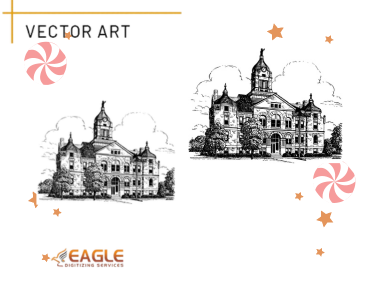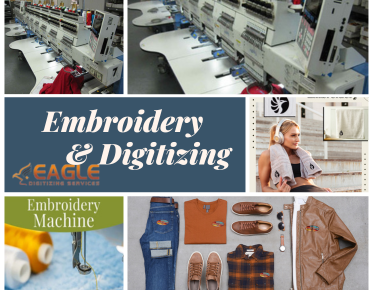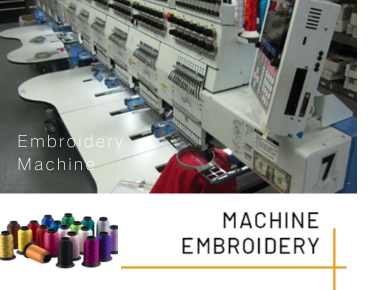Discover Top Vector Art Software for Beginners and Pros
In the vast realm of digital art, vector art
stands out for its precision, scalability, and versatility. Whether you're a
novice dipping your toes into design or a seasoned professional refining your
craft, the software you choose can significantly impact your creative journey.
Let's dive deep into why vector art software matters and explore the best
options available for both beginners and experts. If this post
spurred your interest and you want to find out more about vector conversion, please feel free to contact us.
Why
Vector Art Software Matters
Vector art software is the cornerstone of modern digital design.
Unlike raster graphics, which are made up of pixels, vector art uses
mathematical equations to create shapes, lines, and colors. This means your
artwork can be resized infinitely without losing quality, making it ideal for
everything from logos to large-scale prints. The right software can enhance
your creativity, streamline your workflow, and bring your visions to life with
unparalleled clarity.
The
Basics of Vector Art: A Quick Primer
Vector artwork is all about creating clean, scalable graphics
that look great at any size. It’s made up of paths defined by a start and end
point, along with curves and angles. These paths can be simple lines or complex
shapes, and they're defined by mathematical equations, not pixels. This
foundational knowledge is crucial as it influences how you work with the
software and manipulate your designs.
Why
Choosing the Right Software is Crucial
Selecting the right vector art software is
pivotal. The ideal software should align with your skill level, meet your
design needs, and fit within your budget. It should offer an intuitive
interface for beginners while providing advanced tools for experienced
designers. The right choice can boost your productivity, enhance your
creativity, and ultimately lead to better designs.
Features
to Look for in Vector Art Software
Ease of Use: Key for Beginners
For those just starting, an intuitive interface is essential. Look for
software with straightforward navigation, easy-to-use tools, and plenty of
tutorials or guides. The learning curve should be gentle, allowing you to focus
on creating rather than figuring out how to use the software.
Advanced Tools for the Pros
Professional designers need robust features like custom brushes,
advanced path manipulation, and extensive typography options. Software with
these advanced tools allows for intricate designs and detailed work, pushing
the boundaries of what's possible in vector art.
Cross-Platform Compatibility
In today's interconnected world, cross-platform functionality is a
major plus. Being able to work seamlessly across different devices and
operating systems ensures that your creative process is never interrupted, no
matter where you are or what device you're using.
Affordability vs. Functionality
Balancing cost and features is crucial. While some high-end software
offers comprehensive tools, there are affordable options that provide excellent
functionality without breaking the bank. Consider your budget and the specific
features you need to make an informed decision.
Best
Vector Art Software for Beginners
Adobe Illustrator: The Industry
Standard
Adobe Illustrator is the go-to choice for many designers. It's packed
with powerful features and integrates seamlessly with other Adobe products.
However, its complexity and cost might be a bit daunting for beginners.
Inkscape: The Free and Open
Source Option
Inkscape offers a robust set of tools for free. It’s perfect for those
just starting out and not ready to invest heavily. Its open-source nature means
it’s continually improving with community-driven updates.
CorelDRAW: User-Friendly and
Powerful
CorelDRAW combines ease of use with powerful features, making it a
great option for beginners who want to grow into more advanced tools. Its
user-friendly interface makes learning a breeze.
Affinity Designer: Affordable
and Versatile
Affinity Designer offers a professional-grade toolset at a fraction of
the cost of Adobe Illustrator. It’s intuitive for beginners and powerful enough
for more advanced users, striking a perfect balance.
Vectr: Simple and
Straightforward
Vectr is an easy-to-use, free vector graphics editor. Its simplicity
makes it ideal for beginners who need to get up and running quickly without a
steep learning curve.
Gravit Designer: Cloud-Based
Convenience
Gravit Designer offers a cloud-based solution, that allows you to work
on your designs from anywhere. Its clean interface and versatile tools are
perfect for newcomers.
Tips
for Beginners Using Vector Art Software
Basic Tools and Their Functions
●
Selection Tool: Navigating Your Canvas
○
This tool allows you to click and drag to select
objects on your canvas. It's essential for moving, resizing, and rotating
elements within your artwork.
●
Pen Tool: Mastering Bezier Curves
○
This one is used to create precise paths and
shapes using Bezier curves. Mastering it involves adjusting control handles to
control curve angles and smoothness.
●
Shape Tools: Creating Basic Shapes
○
Shape Tools like rectangles, circles, and
polygons enable the quick creation of geometric forms. Customize shapes by
adjusting dimensions and corner radius.
●
Text Tool: Adding and Editing Text
○
The Text Tool allows you to type and format text
directly on your canvas. Adjust fonts, sizes, colors, and alignment to suit
your design needs.
Understanding Layers and Groups
●
Layer Panel: Managing Your Artwork
○
The Layer Panel displays all elements in your
artwork, arranged in a hierarchical order. Use layers to organize and control
the visibility and stacking order of objects.
●
Grouping Objects for Organization
○
Grouping objects allows you to manage related
elements together, simplifying editing and maintaining structure within complex
compositions.
Working with Color and Swatches
●
Color Palette: Choosing and Mixing Colors
○
Select colors from the color palette and mix
custom hues using RGB or CMYK sliders. Use the eyedropper tool to sample colors
from existing artwork.
●
Applying Gradients and Patterns
○
Apply gradients to add depth and dimension to
shapes and objects. Use preset gradients or create custom gradients with
adjustable color stops.
Precision and Alignment
Techniques
●
Aligning Objects: Distribute and Align Tools
○
Align objects horizontally, and vertically, or
distribute them evenly with precision using the Align tools. Align to key
objects or to the artboard for consistent spacing.
●
Using Rulers and Measurement Tools
○
Rulers and measurement tools provide reference
points for accurately sizing and spacing elements. Use rulers to measure
distances and set precise dimensions.
Editing and Modifying Objects
●
Transforming Objects: Scale, Rotate, Reflect
○
Transform objects by scaling (resizing),
rotating, or reflecting them across axes. Maintain proportions or skew objects
for creative effects.
●
Pathfinder Tools: Combining and Subtracting
Shapes
○
Use Pathfinder tools to create complex shapes by
combining, subtracting, or intersecting multiple objects. Merge shapes
seamlessly to form custom designs.
●
Editing Nodes: Adjusting Bezier Curves
○
Edit nodes and control handles to refine Bezier
curves and paths. Smooth curves, adjust angles and convert anchor points to
achieve desired shapes.
Adding Effects and Styles
●
Applying Effects: Drop Shadows, Blurs, etc.
○
Enhance artwork with effects like drop shadows,
blurs, and glows. Adjust parameters to control the intensity, spread, and
transparency of applied effects.
●
Creating and Applying Graphic Styles
○
Save custom styles for objects, including stroke
and fill attributes. Apply graphic styles to quickly update multiple elements
with consistent appearances.
Working with Brushes for
Artistic Effects
Use brushes to apply artistic strokes, patterns, or textures to paths
and shapes. Customize brush settings to achieve unique visual effects in your
designs.
Saving and Exporting Your
Artwork
Choose appropriate file formats such as AI (Adobe Illustrator), SVG
(Scalable Vector Graphics), EPS (Encapsulated PostScript), or PDF (Portable
Document Format) based on intended use (print or web).
Best
Vector Art Software for Experts
Adobe Illustrator: Unmatched
Versatility
For seasoned professionals, Adobe Illustrator remains unmatched in
versatility and features. Its extensive toolset and integration with other
Adobe products make it indispensable for complex projects.
CorelDRAW: Power and Precision
CorelDRAW offers high precision and power for detailed work. Its
advanced features cater to professional needs, from intricate illustrations to
large-scale print designs.
Sketch: Ideal for UI/UX Design
Sketch is tailored for UI/UX designers, offering tools specifically
for interface design. Its simplicity and powerful features make it a favorite
among web and app designers.
Affinity Designer: Feature-Rich
and Affordable
Affinity Designer continues to impress with its rich feature set and
affordability. It’s a strong competitor to Illustrator, providing professional
tools without the subscription model.
Vectornator: Robust and
User-Friendly
Vectornator is gaining popularity for its robust features and
user-friendly interface. It’s designed for professionals who need powerful
tools but appreciate a clean, intuitive workspace.
Key
Features for Experts to Leverage
Custom Brushes and Effects
Custom brushes and effects can add unique touches to your designs.
These tools allow for more creativity and personalization in your work, setting
your designs apart.
Advanced Layer Management
Efficient layer management is crucial for complex projects. Advanced
options allow you to control visibility, lock layers, and group elements,
making intricate designs more manageable.
Integration with Other Design
Tools
Seamless integration with other design tools can streamline your
workflow. Whether it's Photoshop for raster editing or After Effects for
animation, compatibility is key.
Cross-Platform
Functionality for Professionals
Using Vector Art Software Across
Devices
Professionals often need to work across multiple devices. Software
that supports cross-platform functionality ensures you can continue your work
seamlessly, whether on a desktop, tablet, or smartphone.
Syncing Projects Between
Platforms
Syncing projects between different platforms can save time and prevent
the loss of progress. Cloud-based solutions or software with built-in syncing
capabilities are invaluable.
Cloud Storage and Collaboration
Tools
Cloud storage and collaboration tools enable real-time teamwork and
easy access to your projects from anywhere. These features are essential for
professional workflows and client interactions.
Tips
for Transitioning from Beginner to Expert
Learning Advanced Techniques
Invest time in learning advanced techniques. Online tutorials,
courses, and books can provide deeper insights into the software's capabilities
and enhance your skills.
Participating in Online
Communities
Engage with online communities. Forums, social media groups, and
design communities are great places to ask questions, share work, and get
feedback from fellow designers.
Exploring Tutorials and
Masterclasses
Explore tutorials and masterclasses. Many experts offer in-depth
classes that cover everything from basic tools to advanced design principles,
helping you grow your skills systematically.
Comparing
Vector Art Software: A Side-by-Side Look
Price Comparison: Finding the
Best Value
Compare the cost of different software options. Consider whether a
one-time purchase or subscription model fits your budget and needs. Look for
student discounts or free trials to test the software before committing.
Feature Comparison: What You
Need vs. What You Get
Make a list of essential features you need and compare them across
different software. Ensure the software you choose meets your requirements
without overwhelming you with unnecessary tools.
User Experience: Ease of Use vs.
Power
Balance ease of use with power. Some software offers a simpler interface with fewer features, while others provide extensive tools that might be harder to learn. Choose based on your comfort level and design needs.
Future
Trends in Vector Art Software
AI and Automation in Vector
Design
AI and automation are becoming more prevalent in vector design. These technologies can help streamline
repetitive tasks, suggest design improvements, and even generate artwork,
enhancing productivity and creativity.
Enhanced Collaboration Features
As remote work becomes more common, enhanced collaboration features
are crucial. Look for software that offers real-time collaboration, version
control, and easy sharing options.
Mobile and Tablet Optimization
The future of vector art software is mobile. With tablets and
smartphones becoming more powerful, optimized software allows designers to
create on-the-go without compromising functionality.
Choosing the right vector art software is a journey that depends on
your current skills, future aspirations, and specific design needs. And Eagle
Digitizing, which provides vector graphic conversion services, can be a great addition to your consideration. As the world of
vector art continues to evolve, staying updated with the latest tools and
trends will ensure your designs remain cutting-edge and impactful. Embrace the
ever-evolving landscape of vector art and find the software that best aligns
with your creative vision, along with the assistance of Eagle Digitizing.



